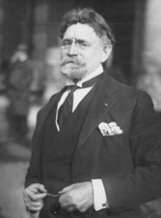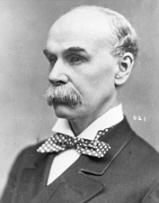Could Bob Kerrey be the Dan Coats of 2012? Interrupted US Senate Tenures Across History
Over the last 222 years, 150 U.S. Senators have had a gap in service in the chamber – lasting more than a decade for 32 of them

Earlier this month, comments made by Nelson’s predecessor, former Senator Bob Kerrey, seemed to leave the door slightly open for his candidacy, should Nelson ultimately decide not to run.
Kerrey, of course, has been out of the Senate for more than a decade, but remains a relatively popular figure in Nebraska politics and would likely give Democrats their best chance at victory if Nelson retires.
But could Kerrey pull this off?
And how common is it for ex-U.S. Senators to return to the nation’s upper legislative chamber, particularly after being out of office for so long?
A Smart Politics review of U.S. Senate Historical Office records finds that 150 of the 1,931 men and women to serve in the chamber (7.8 percent) have a gap in service in their tenure ranging from a few weeks to more than 25 years.
Kerrey only has to look to the last election cycle to find the most recent individual to make a grand return to the Senate after a decade-plus long absence: Indiana Republican Dan Coats.
Coats, like Kerrey, was sworn into the Senate in January 1989, after being appointed to fill newly-minted Vice President Dan Quayle’s seat.
Coats won a special election in 1990 and was reelected in 1992 on his way to serving 10 years until leaving office in January 1999. (Kerrey served two full terms until January 2001).
After Democrat Evan Bayh chose not to seek reelection in 2010, Coats won the open seat race and returned to the chamber after a 12-year absence.
If Nelson retires next year and Kerrey ends up running and winning, he too will have mounted a successful comeback campaign exactly 12 years after departing the Senate.
While a significant number of U.S. Senators have left the the legislative body only to later return, a relatively small number have done so after a decade or more absence, and only a scarce few of these since the end of 19th Century.
Only 32 of the 150 individuals had a break in their bookends of U.S. Senate service of 10 or more years, and just 22 have seen a gap in service of 12 or more years like Coats (and, potentially, Kerrey).
Of these 22 senators with a divided tenure of a dozen or more years, just four including Coats returned to service in the 20th or 21st Centuries.

Illinois Democrat James Lewis (a former U.S. Representative from Washington), served one term in the Senate from 1913 to 1919 and was the party’s whip, but lost his 1918 reelection bid.
Lewis endured a failed gubernatorial run in 1920, but then returned to the Senate by winning the Election of 1930, after a span of 12 years and 1 day from his last previous day of Senate service.
The other two 20th Century figures logging notable gaps in service are Delaware Republican Heisler Ball (14 years and 1 day, out of office from 1905-1919) and Ohio Republican Theodore Burton (13 years, 9 months, 12 days, out of office from 1915-1928).
The individual with the longest break in Senate service is Maryland Democrat William Whyte who clocked out for more than 25 years.
Whyte actually had three stints in the Senate – but was elected only once.
His first term lasted just over seven months between 1868 and 1869 after being appointed to the post upon the resignation of Democrat Reverdy Johnson.

Whyte was then elected to the U.S. Senate and took office in D.C. once again in 1875.
After Whyte lost his reelection bid in 1880, he became mayor of Baltimore and then Attorney General of Maryland, before being appointed once again to the Senate after the death of Arthur Gorman in 1906.
When Whyte returned to the Senate on June 8, 1906 it had been 25 years, 3 months, and 5 days since his last day in the chamber.
Three other individuals have recorded gaps in Senate service of 20 years or longer:
· Future President Andrew Jackson at 24 years, 11 months, and 3 days between 1798 and 1823.
· Indiana Democrat David Turpie at 24 years and 1 day between 1863 and 1887.
· Famous Kentucky statesman Henry Clay at 20 years, 8 months, and 7 days between his second stint ending in 1811 and his third beginning in 1831.
The U.S. Senator with the shortest gap in service was Wisconsin Republican Angus Cameron.
Cameron served a full term from March 4, 1875 to March 3, 1881 but did not run for reelection to his seat.
However, the death of his GOP colleague Matthew Carpenter on February 24th of that year led to a special election in early March, which Cameron won.
Cameron was sworn back into the chamber on March 14, 1881 for a gap of just 11 days.
Another remarkably brief gap in service was turned in by Iowa’s James Harlan.
Harlan was out of office for a mere 17 days in January 1857 after first being elected as a Free Soiler in 1855.
Due to what the Biographical Directory of the United States Congress calls “irregularities in the legislative proceedings,” Harlan’s seat was declared vacant on January 12, 1857.
Harlan was then properly elected – this time as a Republican – and was seated again on January 29th of 1857 – some 17 days later.
Should Bob Kerrey run and get elected in 2012 he would tie Dan Coats for the 22nd longest gap in service for a returning U.S. Senator.
Nebraska Attorney General Jon Bruning is the GOP frontrunner expected to face the eventual democratic nominee.
U.S. Senators with a Gap in Service of 10 or More Years, 1789-Present
|
State
|
Senator
|
Party
|
End
|
Begin
|
Years
|
Months
|
Days
|
|
MD
|
William Whyte*
|
Democrat
|
1881
|
1906
|
25
|
3
|
5
|
|
TN
|
Andrew Jackson
|
Jackson Rep.
|
1798
|
1823
|
24
|
11
|
3
|
|
IN
|
David Turpie
|
Democrat
|
1863
|
1887
|
24
|
0
|
1
|
|
KY
|
Henry Clay**
|
Whig
|
1807
|
1831
|
20
|
8
|
7
|
|
IL, MN, MO
|
James Shields*
|
Democrat
|
1859
|
1879
|
19
|
10
|
24
|
|
LA
|
Henry Johnson
|
Whig
|
1824
|
1844
|
19
|
8
|
16
|
|
VA
|
John Taylor*
|
Dem-Rep
|
1803
|
1822
|
19
|
0
|
11
|
|
VT
|
Isaac Tichenor
|
Federalist
|
1797
|
1815
|
17
|
4
|
15
|
|
TN
|
Alfred Nicholson
|
Democrat
|
1842
|
1859
|
17
|
0
|
25
|
|
NY
|
Rufus King
|
Federalist
|
1796
|
1813
|
16
|
9
|
9
|
|
KY
|
John Crittenden**
|
Anti-Jackson
|
1819
|
1835
|
16
|
0
|
1
|
|
MD
|
Robert Goldsborough
|
Anti-Jackson
|
1819
|
1835
|
15
|
10
|
10
|
|
NY
|
Thomas Platt
|
Republican
|
1881
|
1897
|
15
|
9
|
16
|
|
KY
|
George Bibb
|
Jacksonian
|
1814
|
1829
|
14
|
6
|
9
|
|
DE
|
Heisler Ball
|
Republican
|
1905
|
1919
|
14
|
0
|
1
|
|
MD
|
Reverdy Johnson
|
Democrat
|
1849
|
1863
|
13
|
11
|
25
|
|
OH
|
Theodore Burton
|
Republican
|
1915
|
1928
|
13
|
9
|
12
|
|
OH
|
Thomas Ewing
|
Whig
|
1837
|
1850
|
13
|
4
|
17
|
|
TN
|
Andrew Johnson
|
Democrat
|
1862
|
1875
|
13
|
0
|
0
|
|
NV
|
William Stewart
|
Republican
|
1875
|
1887
|
12
|
0
|
1
|
|
IL
|
James Lewis
|
Democrat
|
1919
|
1931
|
12
|
0
|
1
|
|
IN
|
Dan Coats
|
Republican
|
1999
|
2011
|
12
|
0
|
0
|
|
GA
|
John Berrien*
|
Whig
|
1829
|
1841
|
11
|
11
|
23
|
|
OR
|
Frederick Mulkey
|
Republican
|
1907
|
1918
|
11
|
8
|
3
|
|
GA
|
John Gordon
|
Democrat
|
1880
|
1891
|
10
|
9
|
6
|
|
GA
|
John Forsyth
|
Jacksonian
|
1819
|
1829
|
10
|
8
|
23
|
|
GA
|
George Troup
|
Jacksonian
|
1818
|
1829
|
10
|
5
|
9
|
|
NJ
|
Samuel Southard
|
Anti-Jackson
|
1823
|
1833
|
10
|
0
|
1
|
|
NH
|
Levi Woodbury
|
Democrat
|
1831
|
1841
|
10
|
0
|
1
|
|
RI
|
James Simmons
|
Republican
|
1847
|
1857
|
10
|
0
|
1
|
|
IA
|
Samuel Kirkwood
|
Republican
|
1867
|
1877
|
10
|
0
|
1
|
|
OK
|
Thomas Gore
|
Democrat
|
1921
|
1931
|
10
|
0
|
1
|
* Senators Whyte, Shields, Taylor, and Berrien had three separate stints in the U.S. Senate. ** Senators Clay and Crittenden had four. Table compiled by Smart Politics.
Follow Smart Politics on Twitter.

Let’s hope Nelson retires. Nebraska and the country need a real Democrat in the Senate. Hell, Nelson should be primaried.